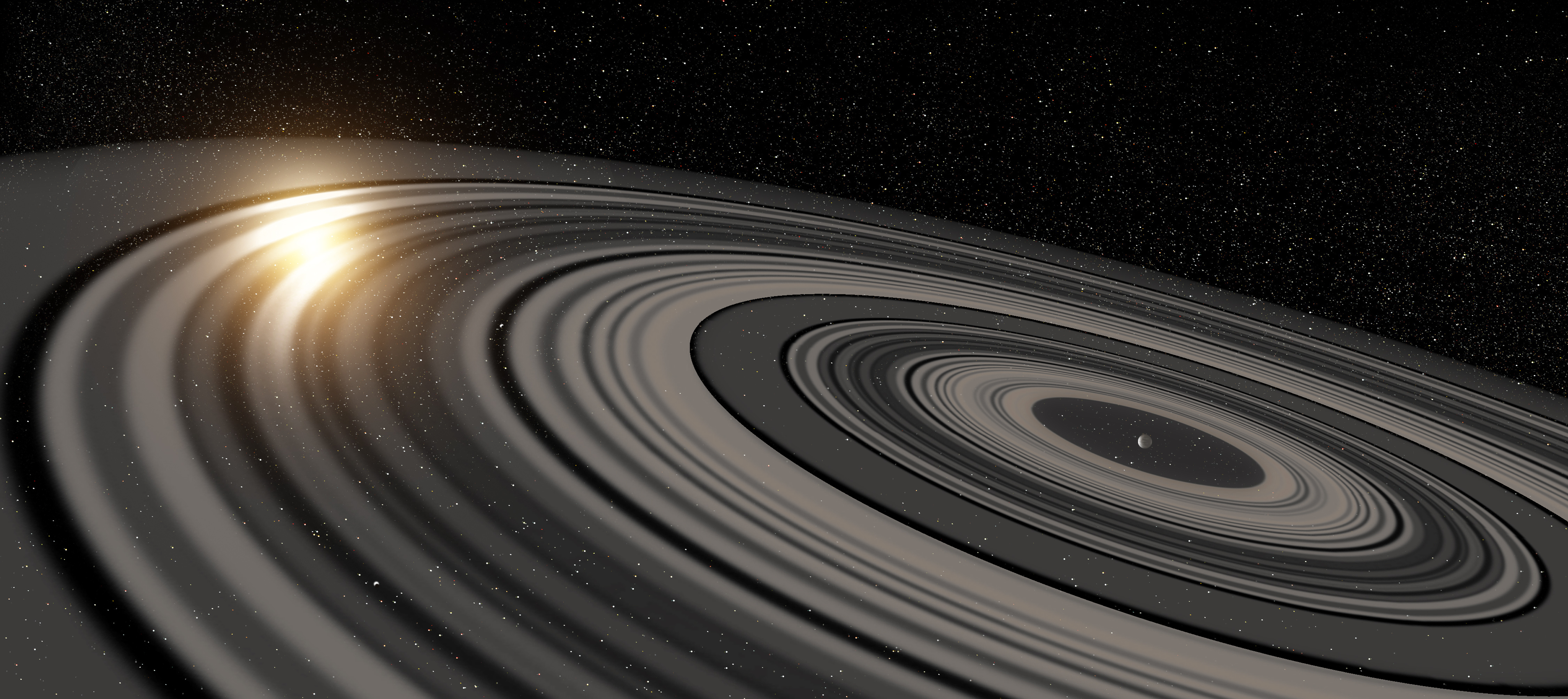Move over Saturn, J1407b has rings that are far more spectacular than anyone would have imagined. This distant ‘planet’ (It may not actually be a planet) orbits an orange star 117 light-years away in the constellation Centaurus, and has a ring system consisting of 30 separate rings, each of which could be tens of Millions of Kilometres wide.

In Spring of 2007, while monitoring the light from the star, astronomers noticed that the star was being eclipsed multiple times to varying degrees. This led the team, consisting of astronomers from Leiden Observatory and the University of Rochester, to conclude that the star was being eclipsed by a giant ring structure belonging to its orbiting gas giant planet. Results from the starlight observations are shown below.
“If we could replace Saturn’s rings with the rings around J1407b,” said Matthew Kenworthy from Leiden Observatory in the Netherlands and lead author of the new study, “they would be easily visible at night and be many times larger than the full Moon.”
The rings are likely a disk that marks the early stages of Moon formation, similar to a planet forming disk around a young star. Astronomers have theorized that Jupiter and Saturn may have had similar giant ring systems during the formation of their many moons in the early solar system.
“The planetary science community has theorized for decades that planets like Jupiter and Saturn would have had, at an early stage, disks around them that then led to the formation of satellites,” according to Mamajek. “However, until we discovered this object in 2012, no one had seen such a ring system. This is the first snapshot of satellite formation on million-kilometer scales around a substellar object.”
J1407b also has a significant gap in the rings, which could be the result of a newly formed moon that could be as large as Earth. It would be far too small for astronomers to see with current technology, but gives us tantalizing ideas about finding moons around exoplanets.
Interestingly, the planet J1407b may not be a planet at all. Estimated to be 10-40 times the mass of Jupiter, it could be classed as a brown dwarf. Brown Dwarfs are warm star-like objects that are not massive enough to undergo fusion and become a star, instead getting their warmth from convective heating in the core.
The data was obtained using the UK-based SuperWASP program, which looks for transiting exoplanets by observing dimming in a star’s light curve.

One thought on “Rings around this Exoplanet put Saturn to Shame”